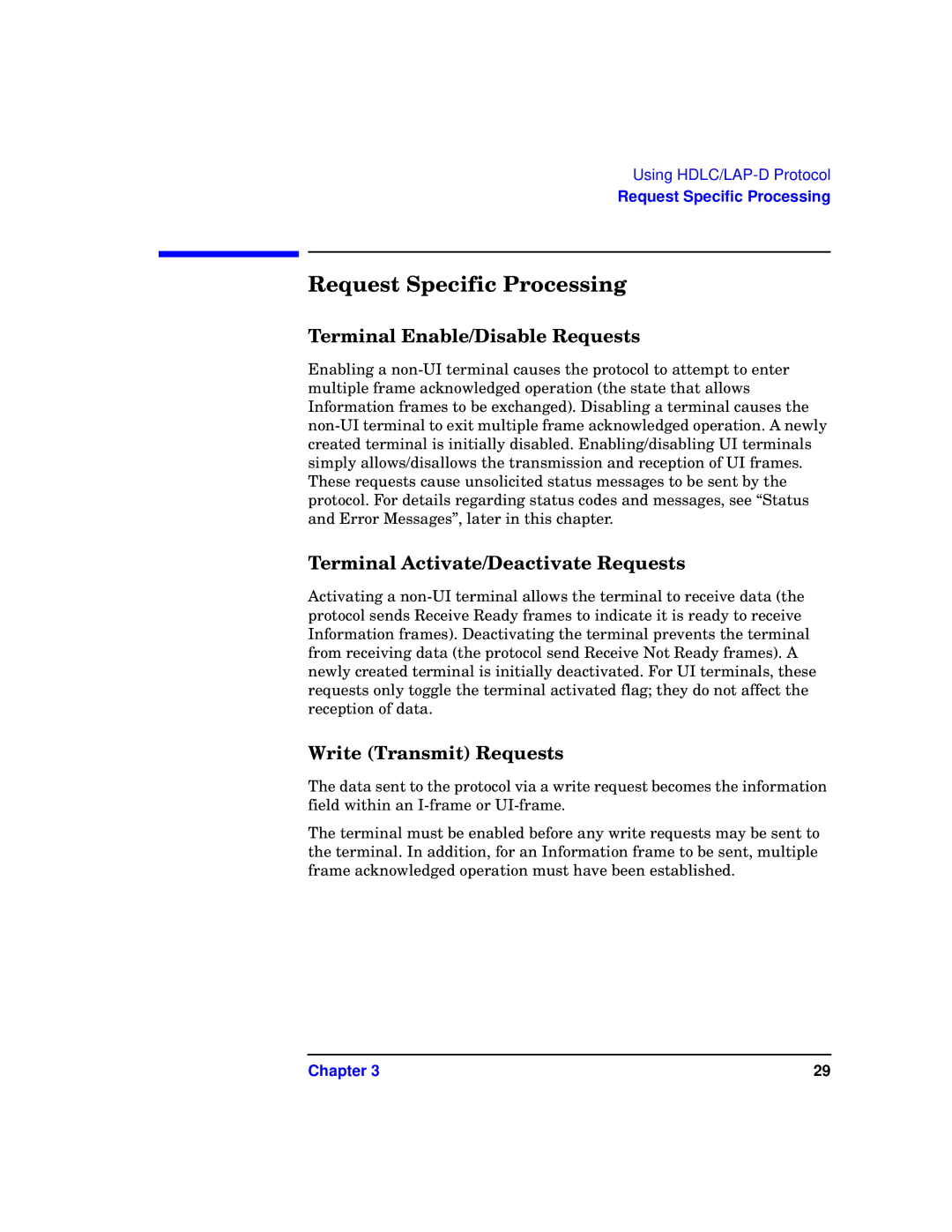
Using HDLC/LAP-D Protocol
Request Specific Processing
Request Specific Processing
Terminal Enable/Disable Requests
Enabling a non-UI terminal causes the protocol to attempt to enter multiple frame acknowledged operation (the state that allows Information frames to be exchanged). Disabling a terminal causes the non-UI terminal to exit multiple frame acknowledged operation. A newly created terminal is initially disabled. Enabling/disabling UI terminals simply allows/disallows the transmission and reception of UI frames. These requests cause unsolicited status messages to be sent by the protocol. For details regarding status codes and messages, see “Status and Error Messages”, later in this chapter.
Terminal Activate/Deactivate Requests
Activating a non-UI terminal allows the terminal to receive data (the protocol sends Receive Ready frames to indicate it is ready to receive Information frames). Deactivating the terminal prevents the terminal from receiving data (the protocol send Receive Not Ready frames). A newly created terminal is initially deactivated. For UI terminals, these requests only toggle the terminal activated flag; they do not affect the reception of data.
Write (Transmit) Requests
The data sent to the protocol via a write request becomes the information field within an I-frame or UI-frame.
The terminal must be enabled before any write requests may be sent to the terminal. In addition, for an Information frame to be sent, multiple frame acknowledged operation must have been established.

